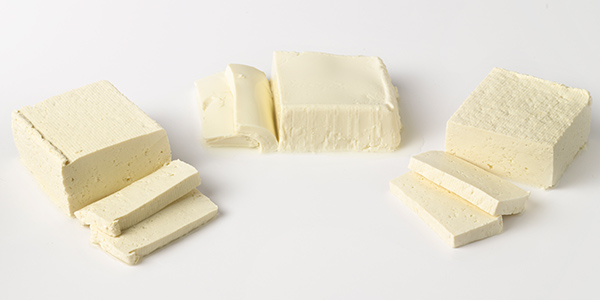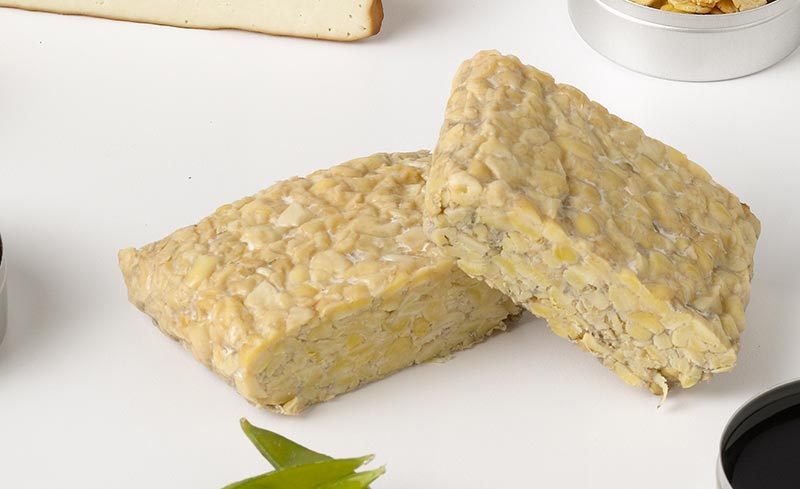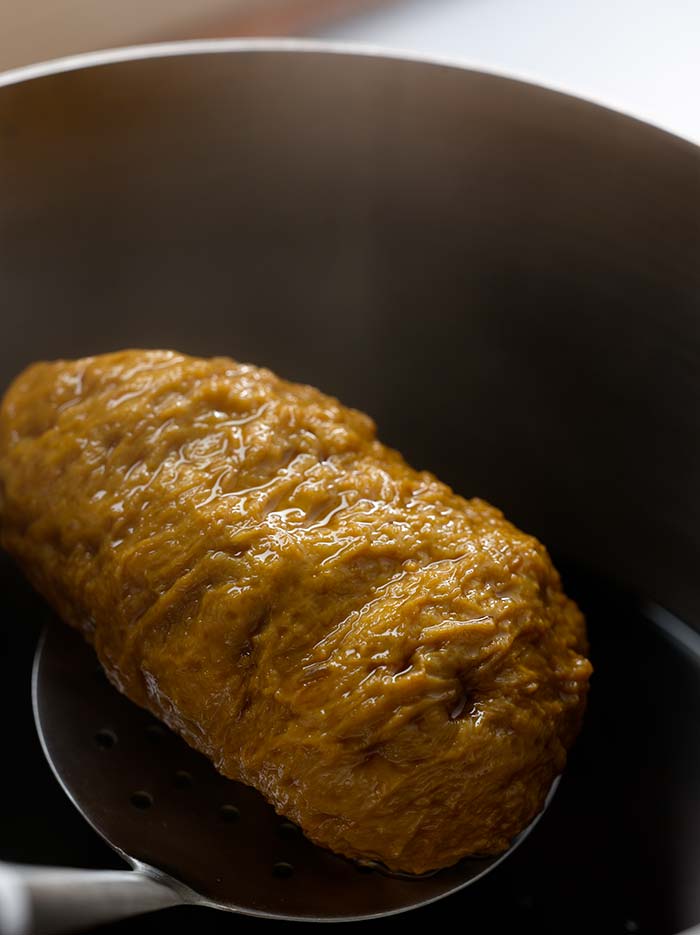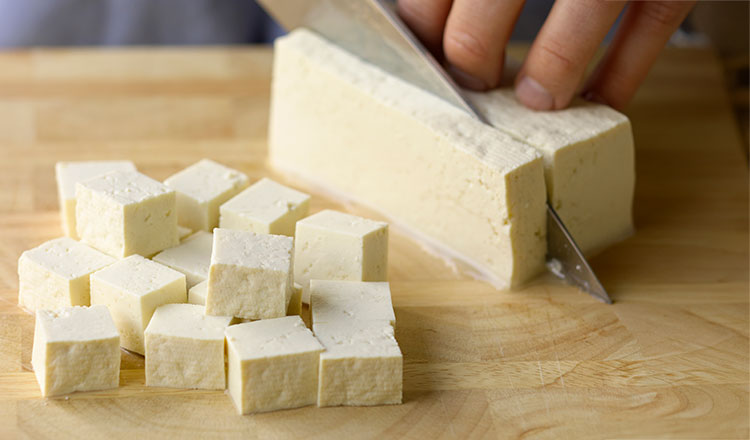Tofu

Tofu is made from soy beans, which are soaked, ground into a paste, cooked, and filtered. This soy milk is then curdled – the curds are removed from the whey and pressed. The pressing removes any excess whey and forms the tofu. Tofu is generally sold in bricks, which are stored in water. Store your purchased tofu similarly – in fresh water (changed daily), refrigerated, until ready to use. Tofu is quite perishable – it should be used within one week. Fresh tofu is usually available in the following varieties:
- Silken: a very soft, creamy, almost custard-like tofu. Ideal for uses in desserts and for pureed items.
- Soft: sometimes tofu is labeled as “soft”, this usually means it is just firm enough to be sliced, but is very soft and creamy in texture.
- Firm: this tofu is firm enough to be sliced and used in a variety of cooking methods. Sometimes grocery stores also sell “extra-firm” tofu, which is even denser.
- Dried Tofu: the firmest available tofu, it can be sliced or crumbled. It has a very chewy texture.
- Frozen Tofu: tofu can also be sold frozen (though it usually changes the texture), pickled, in flavored varieties, and more.
Tempeh

Like tofu, tempeh is made from soybeans, but it undergoes a fermentation process that gives it an altogether different flavor and texture. Tempeh is firmer than tofu, and is higher in protein and fiber. Originally from Indonesia, tempeh can be used in a variety of cooking techniques, such as steaming, boiling, frying, and so on. Tempeh, when tightly wrapped and refrigerated, can be stored for up to 10 days, and frozen for 2 months. It will occasionally have a white color or bloom on it’s outer surface, but this is normal. A few black and grey spots are also to be expected, but if the tempeh ever gains a yellow, blue, or pink hue, it has most likely over-fermented and is spoiled.
Seitan

Seitan is made from vital wheat gluten, which has been cooked and pulled to create a meat-like product that is firm in texture and high in protein. Because it’s texture is so similar to that of meat, it can be used in a variety of preparations: it can be baked, braised, stir-fried, grilled, and more. Seitan also takes other flavorings on easily, making it ideal for marinating. When making your own seitan, it can be flavored with anything – dried herbs, spices, or even nuts. Refrigerated, it can be held for 8-10 days.


